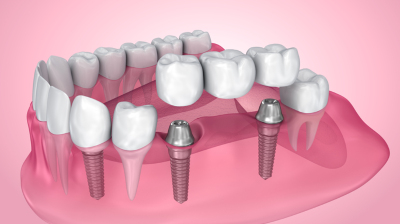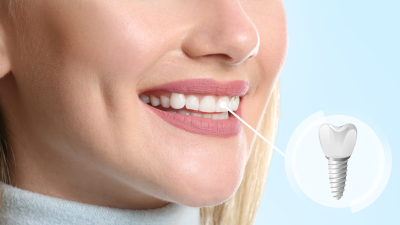In addition to the absence of wisdom teeth, the loss of other teeth need to be repaired in time, if in a state of long-term tooth loss, the adjacent teeth on both sides of the gap of the missing teeth lose support to the gap tilt and shift, the opposite teeth will be easy to stretch and loose, resulting in food impaction, occlusal disorders, causing dental caries, bad breath, periodontal disease and other diseases.

In addition to the absence of wisdom teeth, the loss of other teeth need to be repaired in time, if in a state of long-term tooth loss, the adjacent teeth on both sides of the gap of the missing teeth lose support to the gap tilt and shift, the opposite teeth will be easy to stretch and loose, resulting in food impaction, occlusal disorders, causing dental caries, bad breath, periodontal disease and other diseases.
If there is a missing tooth, it is recommended to go to the hospital as soon as possible to repair it. Our common dental restoration methods mainly include dental implants, fixed Bridges and removable dentures.

What is Fixed bridge repair?
A fixed bridge is what we usually call a fixed denture. It mainly uses the natural teeth at both ends or one end of the missing tooth space as the abutment, and makes the denture retainer on the abutment and connects with the artificial tooth to become a whole, and is glued on the abutment through the cement agent. Because the patient can not take and wear it by himself, and the structure is very similar to the engineering bridge structure, it is called a fixed bridge.
The fixed bridge is mainly composed of three parts: retainer, bridge and connection.
- Retainer
The full crown, post crown, partial crown or inlay made and cemented on the abutment teeth are connected with the bridge body through the connector, so that the fixed bridge and the abutment teeth form a functional whole, and the fixed bridge is fixed.
- Bridge body
Also known as the artificial tooth, it is the part of the fixed bridge that restores the form and function of the missing tooth. The bridge is connected to the retainer through the connector, which transmits the dental force to the abutment and restores the physiological function of the missing tooth.
- Connectome
It is the part between the fixed bridge and the retainer. It can be divided into fixed connectors and active connectors according to different connection modes.
What are the advantages and disadvantages of fixed bridges?
(1) Advantages
① The support, retention and stability of the fixed bridge are good, and the mastication efficiency is very high;
② The volume and natural teeth are similar, there is no particularly obvious foreign body sense, easy to adapt; ③ No need to take off and wear, easy to use, will not affect the pronunciation function;
④ Natural and beautiful production.
(2) Disadvantages
① Compared with movable dentures, the adaptive range of fixed Bridges is much narrower;
② More grinding of tooth tissue; It is not easy to adjust and repair.、
Who is suitable for a fixed bridge to repair a missing tooth?
(1) The number of missing teeth can not be too much, such as 3 or more than 4 missing teeth, generally not recommended to do a fixed bridge;
(2) It is best to choose healthy living pulp teeth, teeth maxillary gingiva height is appropriate, the shape is normal, the dental tissue is healthy, the root should be strong and have enough length;
(3) No progressive periodontal inflammation, no periapical lesions, normal alveolar bone and jaw structure;
(4) The occlusal requirements of the missing tooth area should be basically normal, the gap between the missing teeth should have an appropriate maxillary gingival height, the opposite jaw teeth should not extend, there is a good intermaxillary locking relationship, and the adjacent teeth on both sides of the missing space should not be tilted and displaced;
(5) The alveolar ridge in the missing tooth area healed completely 3 months after tooth extraction or surgery, and the absorption tended to be stable;
(6) In general, the best age for patients is 20-55 years old, requiring good oral health conditions.
What do you need to pay attention to after wearing a fixed bridge?
(1) Can not eat hard, too sticky food, hard food is easy to lead to China collapse, too sticky food can cause the fixed bridge to fall off.
(2) Maintain good oral hygiene habits, brush teeth in time after meals, can be combined with the use of dental floss, gap brush, etc., the food residue in the teeth in time to clean out, so as to avoid food residue stimulation of gum swelling inflammation. At the same time, it is necessary to regularly clean teeth and oral examinations, and deal with problems in time.
(3)There may be slight discomfort when wearing a fixed denture for the first time, which generally disappears within a few days after wearing a tooth.
(4) Fixed bridge repair needs to remove part of the tooth tissue, repair and repair after a period of time may have teeth cold and heat sensitivity symptoms, it is best not to eat irritating food in a short time.


